The trans-Atlantic flight that made Amelia Earhart a celebrity worldwide in 1928 started off at East Boston Airport – now known to travelers as Logan International Airport.
Amelia Earhart
She was born on July 24, 1897, in in Atchison, Kans. Her maternal grandfather was a well-to-do banker and judge, but her father was an alcoholic country lawyer. During her childhood the family moved frequently, and it took a while for Amelia to find herself. She tried junior college and worked as a nurse’s assistant in World War I, thought about entering Smith College, enrolled at Columbia, then quit to spend time with her parents in California.
In Long Beach, she took her first ride in an airplane. It lasted 10 minutes, but that was enough for her. “I knew I had to fly,” she wrote. On May 15, 1923, Amelia Earhart became the 16th woman issued an international pilot’s license.
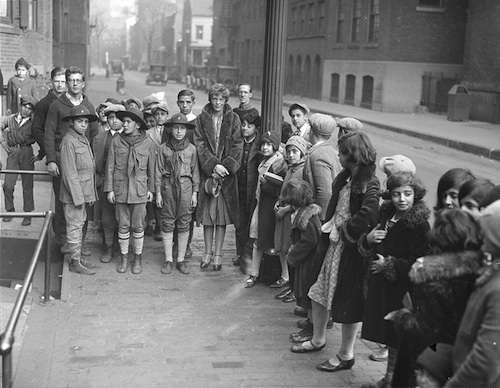
Amelia Earhart returns to Denison House after her famous flight. Photo courtesy Boston Public Library, Leslie Jones Collection.
She tried more jobs, then drove cross-country with her mother to Boston. She tried college again, then became a teacher, then in 1925 she got a job as a social worker at Denison House in Boston. It was the second oldest settlement house in the nation.
Social work then offered a new career option for ambitious, educated women like Amelia Earhart. She taught English to Syrian, Chinese and some Italian children. They were as interesting as any people she had known, she later wrote.
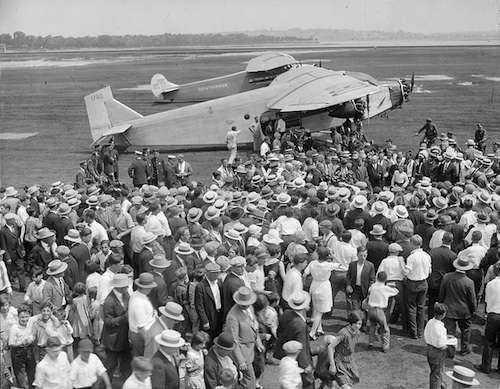
Amelia Earhart demonstrates flying, 1927. Photo courtesy Boston Public Library, Leslie Jones Collection.
Aviatrix
She lived in Medford, Mass., but she rarely stayed home. Earhart somehow found time to fly and to promote flying. She worked as a sales representative for Kinner Aircraft, wrote columns about aviation and laid plans for an organization for women fliers that would become the Ninety Nines.
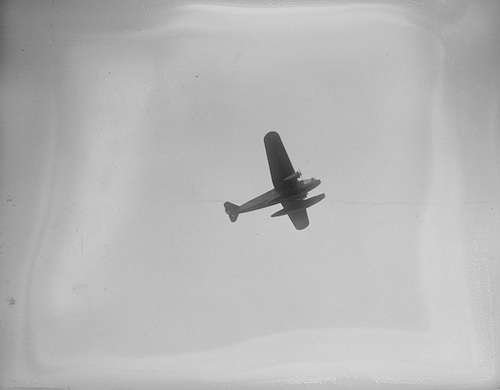
The Friendship takes off from East Boston for Southampton, England. Photo courtesy Boston Public Library, Leslie Jones Collection.
Then on June 17, 1928 she took off in a trimotor seaplane called the Friendship with Wilmer Stutz and Louis Gordon. They left from East Boston Airport to Newfoundland. Twenty hours and 40 minutes later they landed in Wales. Then they flew on to Southampton, England.
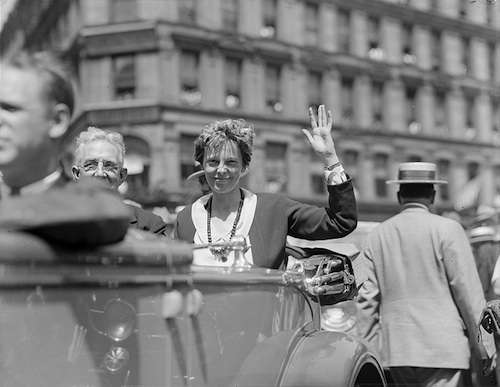
Amelia Earhart gets a heroine’s welcome in Boston. Photo courtesy Boston Public Library, Leslie Jones Collection.
Instant Fame
No matter that all she did during the flight was to keep the flight log. As the first woman to fly across the Atlantic, she achieved celebrity.
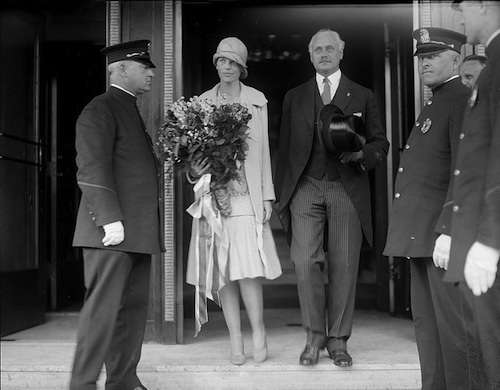
Amelia Earhart with Medford Mayor Edward Larkin. Photo courtesy Boston Public Lilbrary, Leslie Jones Collection.
She and the other Friendship Flyers were feted in her hometown of Medford in July 1928. In the photo above, Medford Mayor Edward Larkin escorted her to the ceremony.
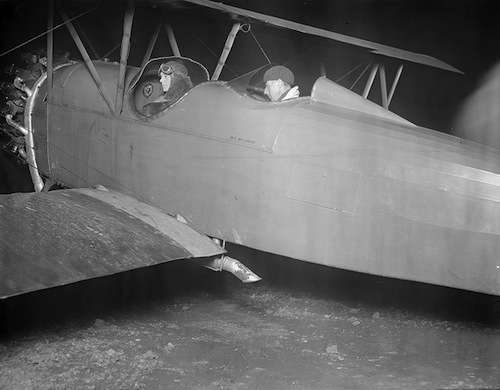
Earhart takes off from East Boston, again. Photo courtesy Boston Public Library, Leslie Jones Collection.
She was soon back in the air. Above, photographer Leslie Jones snapped her first takeoff after her famed trans-Atlantic flight.
Amelia Earhart went on to set more aviation records. She flew solo across the Atlantic, wrote a best-selling book and earned the Distinguished Flying Cross.
Amelia Earhart disappeared over the Central Pacific Ocean on July 2, 1937.
If you enjoyed this story, you may also want to read about Earhart’s wedding in Connecticut here. This story was updated in 2022.
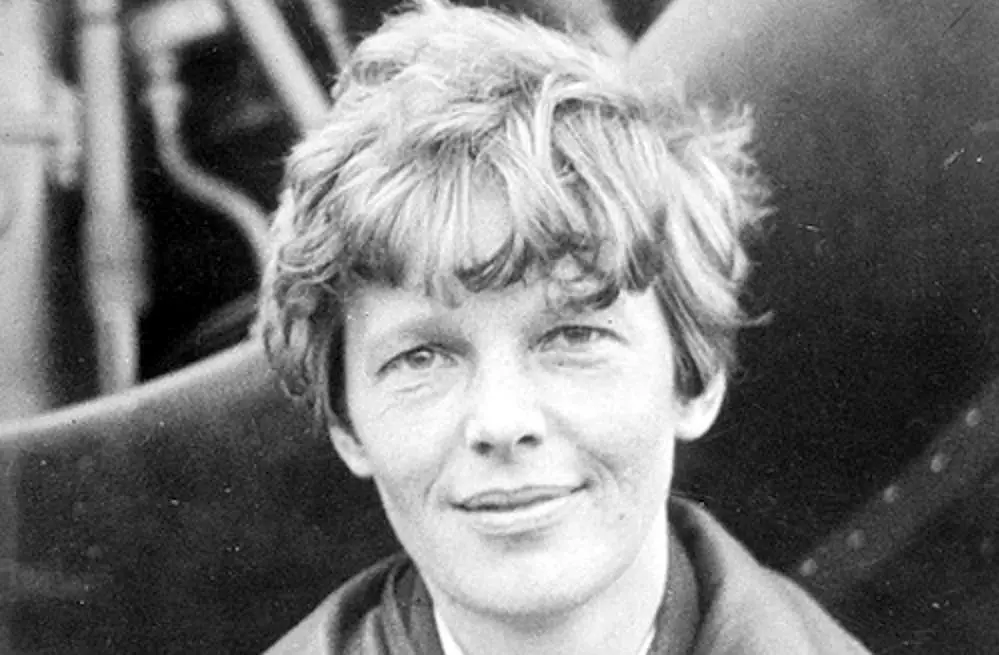
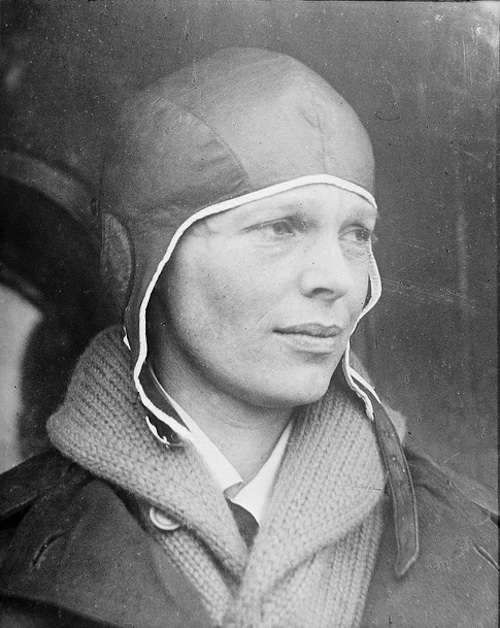
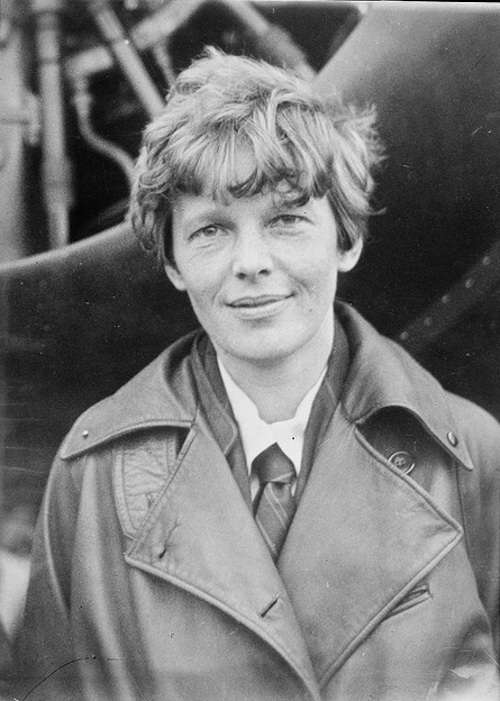
7 comments
I was told she learned to fly at Dennison Airport in Quincy? Which is now Marina Bay? My father was friends with the Dennison family, and that is where the info comes from. Anyone know more about this?
I did not know that.
So sad. Still bothers me. Bad end.
[…] I came across countless photos of new technology and transport methods in the archives. However, I chose this particular one (see Image 1.3) as it demonstrates the celebrity combined with air transport. It is ironic that Jervis states ‘such machines [aeroplanes were] characteristically coded as masculine’ (1998, p. 213). Following on from this, we discussed how the role of women has changed over the centuries in lectures this week. This makes Amelia Earhart all the more special as she too became an icon, a female aviator enshrouded in success and mystery, disappearing 10 years after this visit to the grounds that later became Logan Airport. […]
[…] Earhart of course said, ‘Yes,’ to flying across the Atlantic. On June 17, 1928 she took off with Wilmer Stutz and Louis Gordon from Newfoundland and landed in […]
[…] Denison House, a settlement house that encouraged creativity in poor immigrant children. (Amelia Earhart later worked […]
[…] cooking classes for immigrants to teach them economy and proper food preparation. In the 1890s, the Denison House cooking school was popular among the Irish residents of Boston’s South End. But then when the […]
Comments are closed.